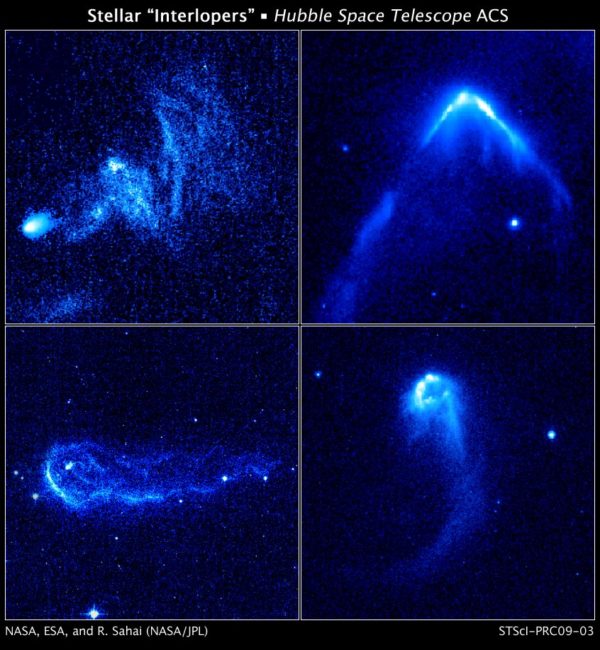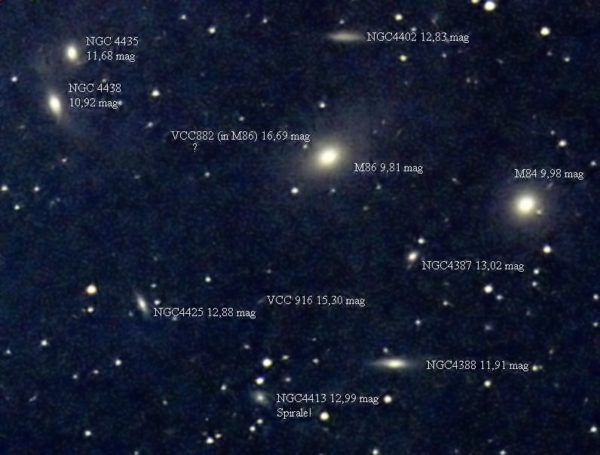“Mapping out the elements in a star is like reading its DNA. We’re using those DNA readings to decode the history of the Milky Way from the stars that we can observe today.” -Steven Majewski
Most of the stars in our Milky Way have long lives ahead of them, with dozens or even hundreds of orbits around the entire galaxy to come over their lifetimes. With hundreds of billions of stars involved in this cosmic dance, it stands to reason that on occasion, another nearby star will either gravitationally or cataclysmically (e.g., from a supernova) kick such a star to incredible velocities, perhaps even out of a galaxy.
 Four runaway stars plowing through regions of dense interstellar gas and creating bright bow waves and trailing tails of glowing gas. Image credit: NASA, ESA and R. Sahai (NASA/JPL), taken with Hubble's Advanced Camera for Surveys.
Four runaway stars plowing through regions of dense interstellar gas and creating bright bow waves and trailing tails of glowing gas. Image credit: NASA, ESA and R. Sahai (NASA/JPL), taken with Hubble's Advanced Camera for Surveys.
How does this happen? How often does this happen? And if-and-when it does, is it possible for the star to hold onto its planets? This could lead to an incredible situation where the view from your night sky would include no stars at all, just planets and galaxies. And it would be beautiful.
- Log in to post comments

